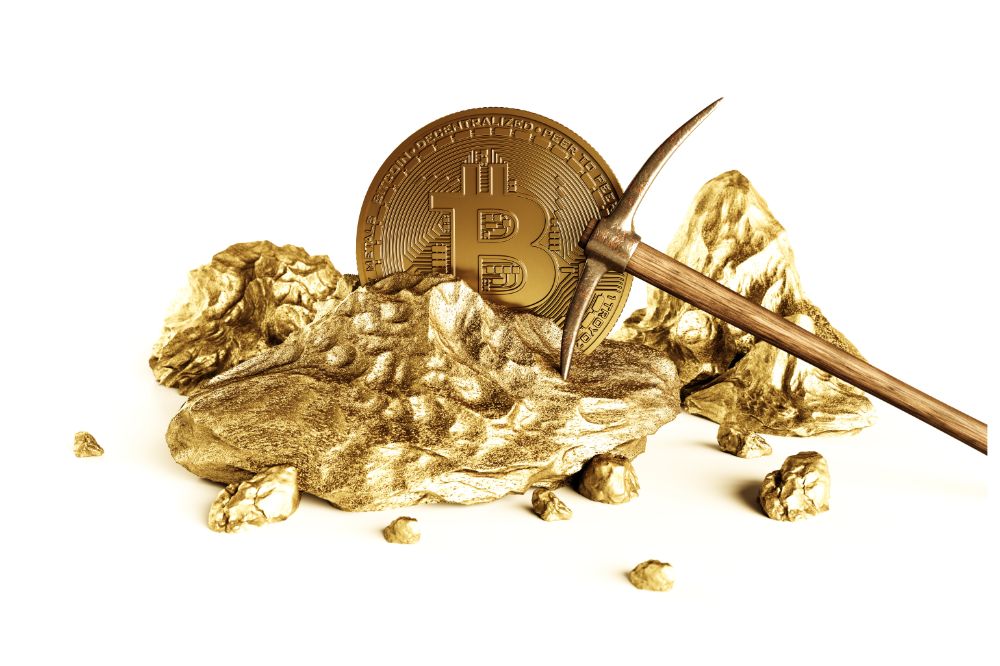There are few people who haven't heard about cryptocurrencies and Bitcoin. Many new assets and opportunities have emerged in modern times, but who would have predicted that virtual money would be one of them? Many individuals are investing in this cryptocurrency as it grows in popularity. But what happens after all Bitcoins have been mined?
In this post, we will address the following questions: what is Bitcoin, how much of it remains to be mined, and what happens after it is completely mined? So, without further ado, let's look at the answers to these questions and what it means for your portfolio if you're an investor.

What Is Bitcoin?
Bitcoin is a virtual currency that functions just like real money. Consider it a computer file saved in a digital wallet software that you may download to your phone or PC. Each wallet includes an address you may share with others to accept Bitcoin from friends, business partners, clients, and so on.
Many people were suspicious when Bitcoin was originally introduced, but with time, individuals grew interested and were amazed by its worth. Some even expressed regret for not investing in Bitcoin during its early years. Bitcoin's price has risen throughout the years and is likely to rise more.
Bitcoin and blockchain were developed to eliminate the need for third parties in the transaction process, resulting in a decentralized transaction process. The transaction is the process of transferring Bitcoin assets between accounts. Once verified, all transactions are logged on the blockchain.
Each block of the blockchain includes a collection of transactions. Transparency is one of the system's primary values since fresh blocks and transactions can be seen. In this system, there is no room for deception or corruption.
This digital money is a sort of cryptocurrency that is protected by encryption. Although Bitcoin was the first cryptocurrency, numerous cryptocurrencies have emerged since then.
Why Is Mining Important?
Miners are those that solve cryptographic challenges to validate and verify a block of transactions on the network. Miners are compensated with fresh bitcoins and the aggregate transaction fees paid in a block. Halve was up to 25 Bitcoins per block in 2012, and that amount continued to fall. It was 12.5 in 2016, and by 2020, miners might earn 6.25 Bitcoin for each new block.
Although the mining process seems simple, it needs a lot of energy and high-end processing power to solve complicated mathematical challenges. Energy expenses may quickly add up; therefore, Bitcoin earnings are the difference between Bitcoin value and the cost of mining resources.
What Happens When All Bitcoins Are Mined?
The total number of Bitcoins that may be mined is 21 million. This information is included in the original Bitcoin source code, which Satoshi Nakamoto wrote. He is the guy who invented Bitcoin and introduced it to the world, yet we still don't know who he is.
According to current research, as the mining process continues, the value of Bitcoin mining gets less lucrative. That doesn't mean miners won't be compensated; they'll be rewarded in transaction fees rather than Bitcoins.
Since Bitcoin's inception in 2009, 19 million coins have been mined. Although this represents around 90% of the entire Bitcoin supply, it is expected that the remainder will not be completely mined until 2140. This is because the mining speed rate decreases with time. The first half of the cryptocurrency was mined in three years, and fewer than 500,000 BTC was produced in 2021.
A new Bitcoin is introduced to the supply every 10 minutes at a set pace of one block; however, half of the new bitcoins are lowered over four years. Transaction costs, on the other side, will climb to compensate for the shortage of mined Bitcoins. Because Bitcoin is built for accuracy rather than speed, increasing the number of transactions would slow down the transaction process.
If the volume of transactions falls, Bitcoin may become a reserve asset. Smaller traders would be pushed out of the network, leaving only huge institutional players on the field. This implies that transaction costs would rise, making trading prohibitively costly for tiny retail traders.
If the demand for Bitcoin continues to rise, so will the price. Sellers will decide the price this way since Bitcoin will grow harder and slower than mine.
We must account for Bitcoins that are permanently lost in this computation. This occurs as a result of lost Bitcoin wallet passwords, lost hard drives, or when someone dies, and no passwords are left behind.
To see projected bitcoin developments, there are two prevalent growth models. Those are hyperbolic. The Stock to Flow pricing model and Trav's Parabolic Growth Model both anticipate market price, value, and volatility, which may aid in investing choices.
If hyper-bitcoinization happens by 2140, $100 of BTC at today's price of $8880 is equivalent to 0.01126 Satoshis. Satoshis should be worth $238,373.77 when the final Bitcoin is mined.
Please read the full article here: https://energimine.com/what-happens-when-all-bitcoins-are-mined/
The post What Happens When All Bitcoins Are Mined? appeared first on https://gqcentral.co.uk





Comments are closed